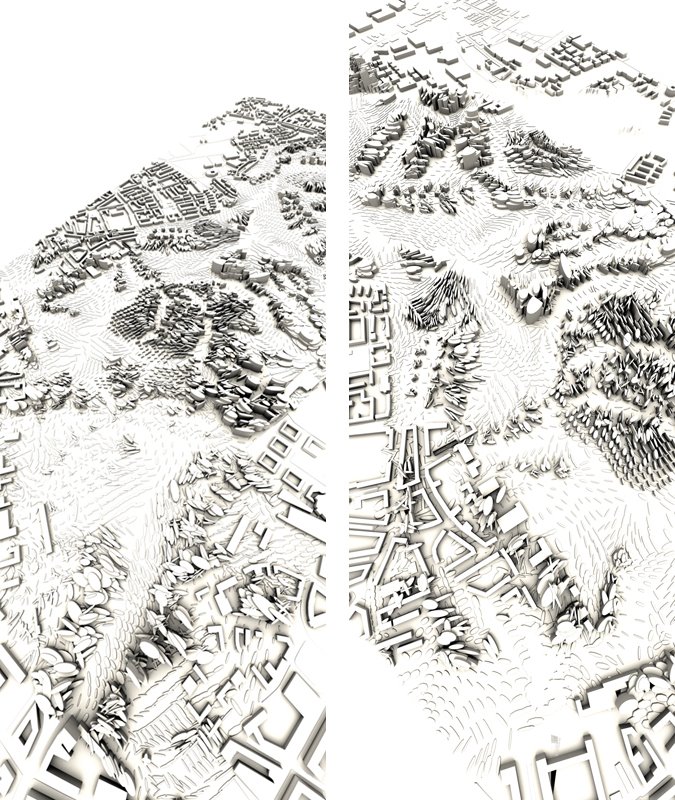Edaphication
Diploma thesis by Daniel Koehler at the University of Applied Arts Viennastudio Hadid,
thesis advisor: Zaha Hadid, Patrik Schumacher, Alisa Andrasek,
2008.
The "Kruppguertel" in Essen (formally the location of the Thyssen-Krupp industry), is an excellent development area in the heart of a post-industrial region in change.One of the pithiest characters of the Ruhrgebiet is the heterogeneity in material, organization, form and density of the urban environment. Taking advantage from the heterogeneity of the Ruhrgebiet, only the overlapping areas of different interests, properties and objects become materialized. On the site are carefully placed fields of interest, based on contextual data or impulses of planned devices. In an iterational process, they counterbalance each other, by adding fields with missing properties. The process fades in the scale of the object with upward iteration. The system reacts to change the properties or by adding or removing of a field. The overlapping areas define the center fields for the object level of the simulation process. The object level process is based on the research of grouping principles. By tuning the grouping parameters with situational specific values evaluated on the center-field-level, the objects stabilize in balanced relationships. Edaphic configurations. Consequently: by adding, removing or changing objects, the configuration would be balanced in an entirely different way. Edaphication works as an underlying continuity of the Ruhrgebiet.
Edaphication is a methodology for evaluation of information networks, based on contextual data and general studies of grouping principles. By the use of a parametrical relational network between the particular city-layers emerge urban figurations on the linkage points, in the structural coherence of a postindustrial region. Identity becomes a result of the subjective perception of multiple readings. In ecology, edaphic refers to plant communities that are distinguished by soil conditions rather than by the climate. In the context of urban strategies, edaphic tactics evolve a parametric design (global/ the climate) from environmental conditions (local/the ground). Edaphication here is an urban research project to develop parametric design strategies in the consequential coherence of the Ruhrgebiet, a postindustrial region in Germany. The initial point for the project is the logo for the cultural capital 2010 event in Essen, the recognition of the Ruhrgebiet as a pixilated landscape. The presumption that there are natural reasons for the emergence of the flatten pixel pattern in an urban scale is the starting point for an investigation of the basic principles of the emergence of city models and on the environmental roots of the region.
There are three basic principles of grouping behaviors, in which one can differentiate between local (environment, flatten) or global (idea, hierarchal) impacts.
1. Movement: the assembling of masses is the most obvious grouping strategy. On the global level, one can use the influence radius or the intensity of the center as parameters to affect density, size, and gradient shifts. On the local level, one can use an offset parameter to appoint the minimum distance to the next object.
2. Scale: similarity as a grouping principle. An arrangement of object properties and their intensity can regroup both the perceptional and the programmatic understanding of an environment. An environmental composition of object properties allows one to create a multiple reading of the city on a subjective level.
3. Orientation: The modality how objects react with their environment is the first step to creating situations. The perception of ambient conditions is important as a subjective guidance in the city. They are structuring the city with focal points. For a better visualization of the principles, all attributes have an offset (circle), as a placeholder for the size or material border in the diagrams.









